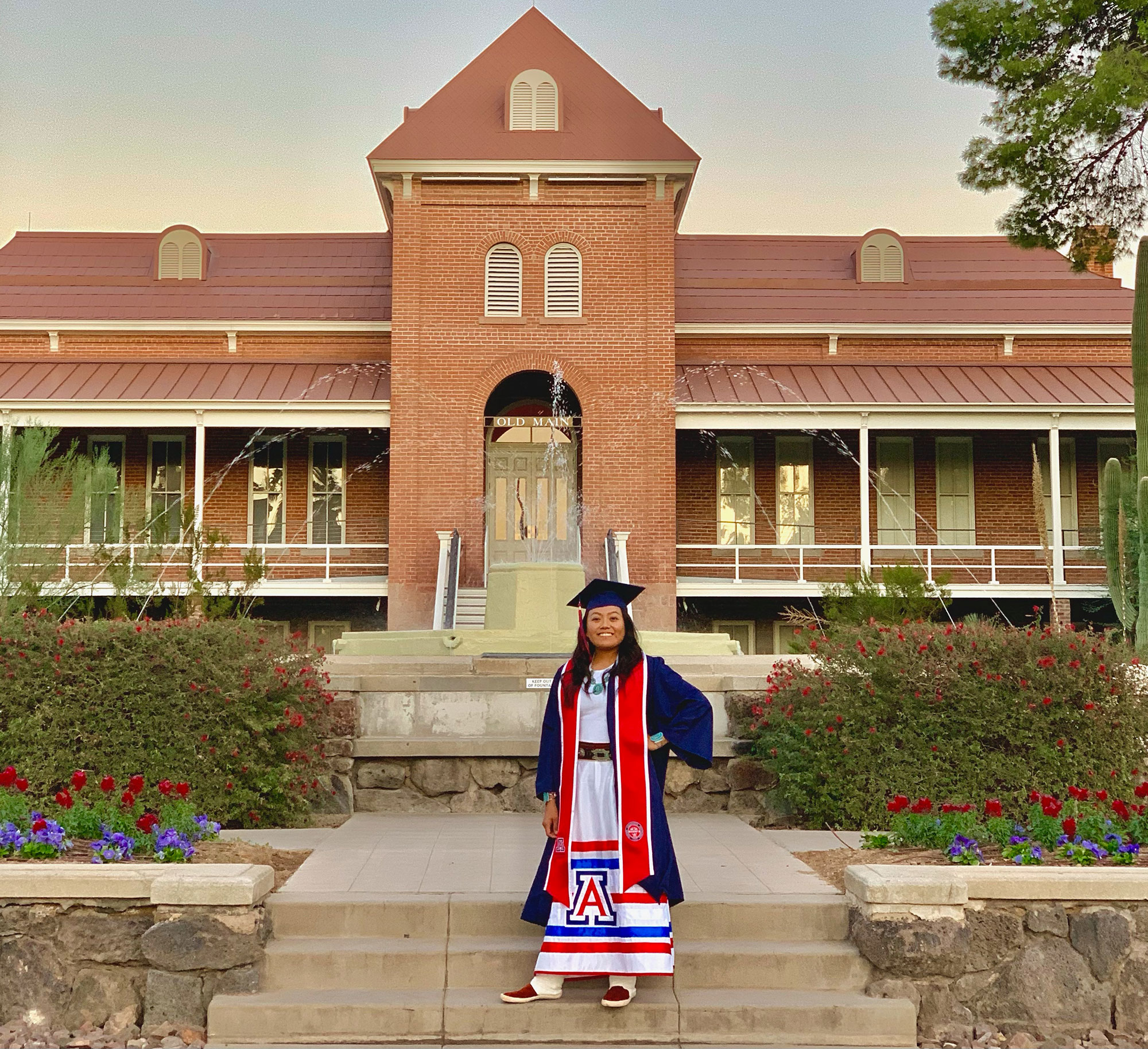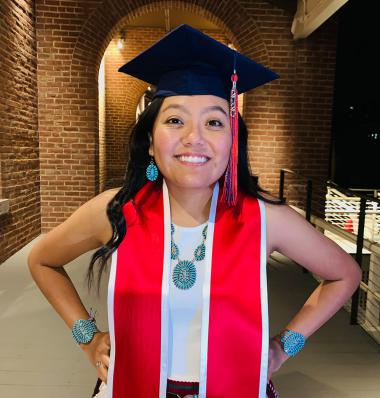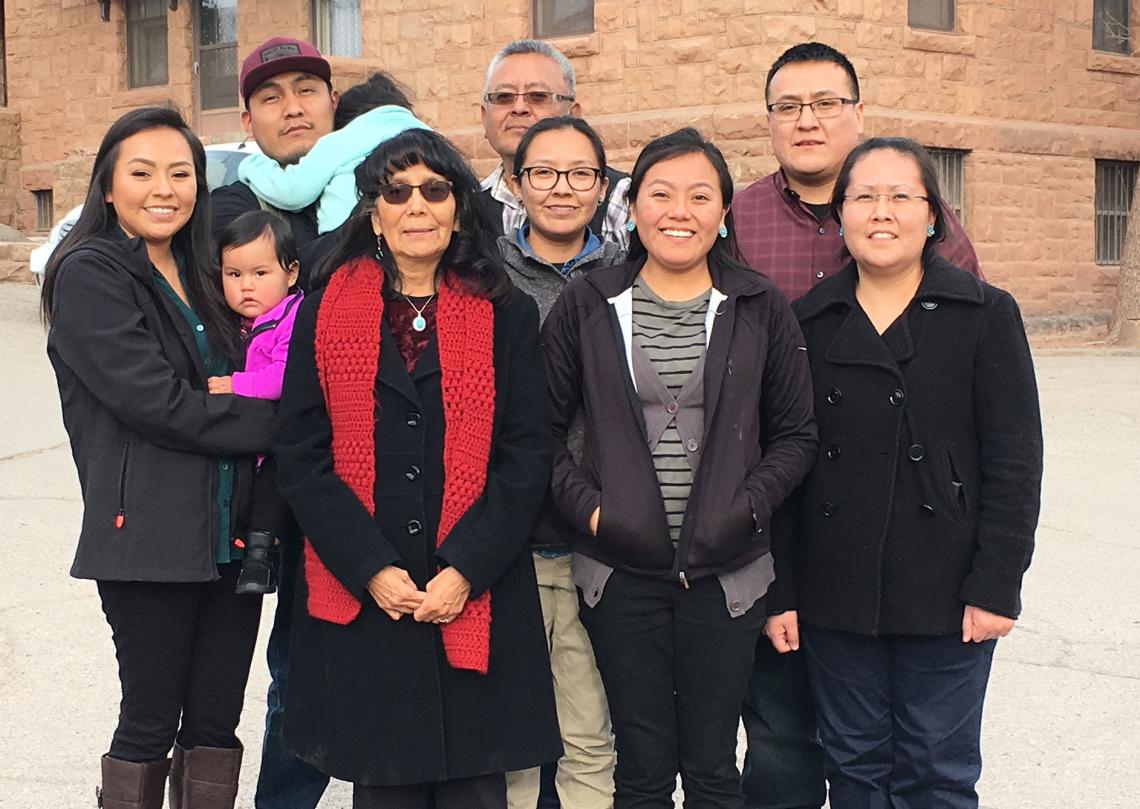Student Spotlight: Studying Carbon Sequestration on the Navajo Nation, Samantha Yazzie (BS ’20)
As a first-generation college student and Diné (Navajo), Samantha Yazzie decided on an environmental science degree because she didn’t want her young family members growing up in a polluted world.
Yazzie_graduation_2000x1800.jpg

Yazzie (BS Environmental Science ’20) grew up understanding and seeing our environment as an equal on the Navajo Nation.
Yazzie_headshot_1000x1333.jpg

Focused on solving environmental issues, her independent study project investigates the potential of carbon sequestration, the capturing and storing of carbon dioxide from the atmosphere to mitigate climate change, on the Navajo Nation.
Inspired by Film and Family
“Growing up, I learned all about the environment and nature from my family.” says Yazzie. “We’ve practiced sustainability all along.”
With an associate’s degree, she thought about going into nursing, but decided it wasn’t the right fit. And as she watched her young nieces grow, she become concerned they might miss out on experiencing nature because of environmental contamination and pollution.
After the encouragement of several Wildcat alumni in her family and discussions with advisors, Yazzie came to the University of Arizona set on an environmental science major.
Then, it was during one of her favorite classes with faculty Marcel Schaap, Environmental Physics (ENVS 420), that Yazzie learned about carbon sequestration.
Yazzie_family_2000x1500.jpg

Independent Study on Carbon Sequestration
Intrigued by the topic and a film buff, Yazzie watched the documentary “Kiss The Ground.” Focusing on regenerating the world’s soils, the film discusses how drawing down atmospheric carbon can stabilize the climate, restore ecosystems and provide food supplies.
Yazzie knew she found a topic for her independent study—one of the last pieces needed for her degree—and a future research area.
Reaching out to Schaap, Yazzie proposed her topic of examining carbon harvesting on the Navajo Nation not only for environmental, but for economic reasons.
“I could bring income to the Navajo Nation with resources we already have available.” says Yazzie. “We can use land management practices with our cattle, horses and sheep to improve soil health and help stop climate change.”
By weaving together Indigenous practices and the concepts of carbon harvesting, Yazzie believes her community could not only regenerate the soil, but also increase vegetation and help with dust mitigation on the Navajo Nation.
The Future Falls into Place
For future plans, Yazzie wants to continue to study soil health, climate change and carbon sequestration to help her family and community.
“As Native American, you are encouraged to get educated and bring back knowledge to help your people.” says Yazzie.
At the virtual American Indian Science and Engineering Society conference, she met a representative from the U.S. Department of Energy who encouraged her to apply recent graduate pathway program that seeks to bring in top talent to the agency.
With an office with specific programs on carbon capture and utilization, Yazzie believes this could be a great potential next step.
“I feel very blessed at how everything fell into place.” says Yazzie. “I met several people to help guide me, like Dr. Schaap and other Indigenous students, and I’m excited to start living my life.”

